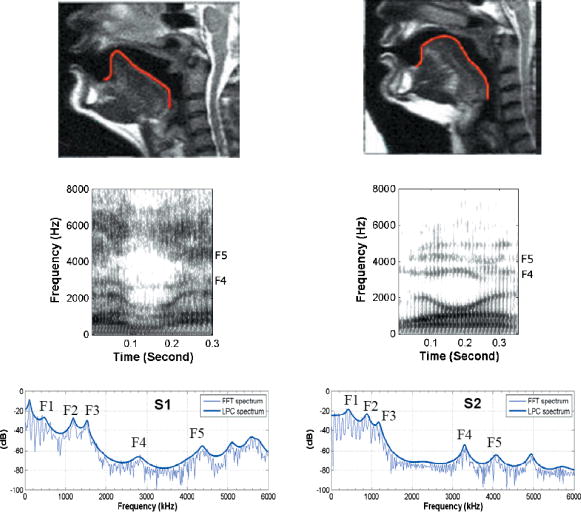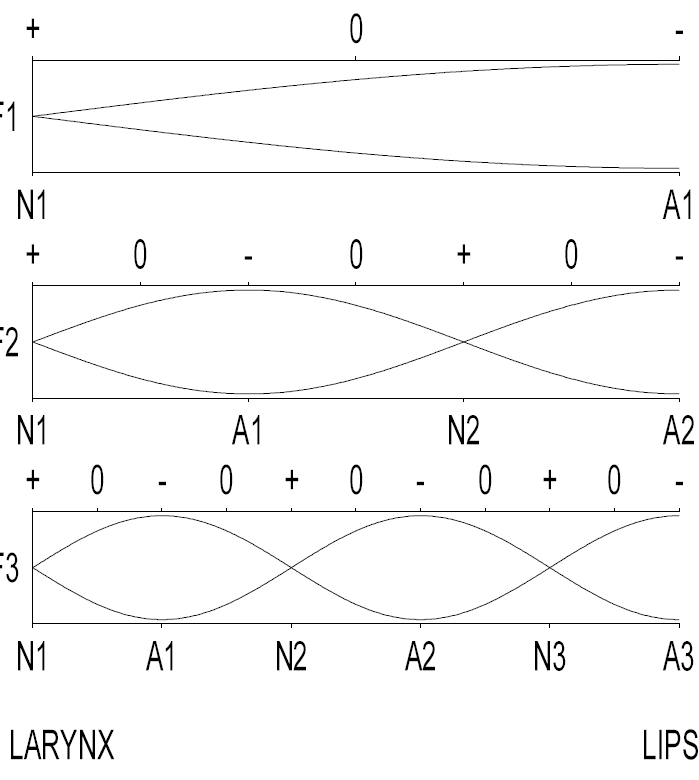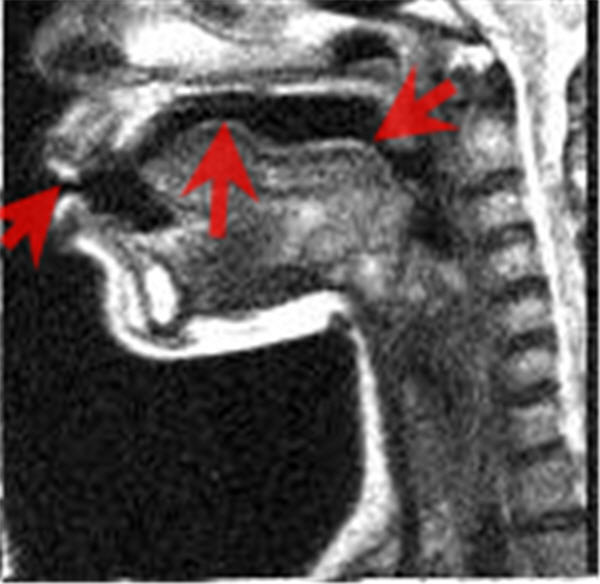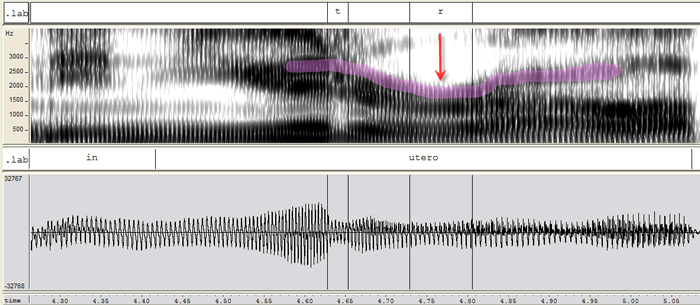January 09, 2007
The syntonic phonetics of Pynchon's pitchuhv
 At 1,085 pages, Thomas Pynchon's Against the Day reminded one Amazon reviewer of Ambrose Bierce's comment: "The covers of this book are too far apart".
At 1,085 pages, Thomas Pynchon's Against the Day reminded one Amazon reviewer of Ambrose Bierce's comment: "The covers of this book are too far apart".
The situation is worse than a simple page count suggests, because every aspect of every event in the book is tied to to a burgeoning tangle of associations. And the connections within the book are bad enough, but Pynchon's works are set in real places and times, and web search makes it easy to follow his hints off into one intellectual thicket after another, as you can see from the links at the bottom of this page.
I've been making a little list of bloggably linguistic passages as I make my way through Against the Day -- the tally is up to to 28 items now -- but I've found it hard to turn any of these into blog posts in the time that I can devote to the task. Under the influence of his infectiously divergent style, my Pynchon posts tend to overflow the breakfast hour.
This post -- an attempt to explain why Pynchon rendered picture as "pitchuhv" in the speech of a Hell's Kitchen street urchin circa 1900 -- took me two full breakfasts and part of a third one, and it's only seeing the light of day now because I decided that enough is enough, or (you may well think) too much.
Turn to page 397, if you're following along at home. We're back with the Chums of Chance, last seen on Language Log as their hydrogen skyship Inconvenience approached the World's Columbian Exposition of 1893 in Chicago. Several adventures later, Pynchon opens a chapter by reminding us that his world is an artificial wilderness of cryptic correspondences, like Baudelaire's forest of symbols, but mathematically amplified and more than a bit more menacing:
In New York for a few weeks of ground-leave, the boys had set up camp in Central Park. From time to time, messages arrived from Hierarchy via the usual pigeons and spiritualists, rocks through windows, blindfolded couriers reciting from memory, undersea cable, overland telegraph wire, lately the syntonic wireless, and signed, when at all, only with a carefully cryptic number -- that being as nigh as any of them had ever approached, or ever would, to whatever pyramid of offices might be towering in the mists above.
So what is "the syntonic wireless", I wondered? A web search turns up this item from Electrical Review, June 29, 1901:
After the reading of Mr. Marconi's paper, which was published in full in the ELECTRICAL REVIEW for June 15 and 22, before the Society of Arts, in London, Professor W. E. Ayrton being in the chair, the following discussion took place...
The chairman: Although still far away, he thought they were gradually coming within thinkable distance of the realization of a prophecy he had ventured to make four years before, of a time when if a person wanted to call to a friend he knew not where, he would call in a loud, electromagnetic voice, heard by him who had the electromagnetic ear, silent to him who had it not. "Where are you?" he would say. A small reply would come, "I am at the bottom of a coal mine, or crossing the Andes, or in the middle of the Pacific." Or, perhaps, in spite of all the calling, no reply would come, and the person would then know that his friend was dead. Let them think of what that meant, of the calling which went on every day from room to room of a house, and then think of that calling extending from pole to pole; not a noisy babble, but a call audible to him who wanted to hear and absolutely silent to him who did not, it was almost like dreamland and ghostland, not the ghostland of the heated imagination cultivated by the Psychical Society, but a real communication from a distance based on true physical laws. On seeing the young faces of so many present he was filled with green envy that they, and not he, might very likely live to see the fulfillment of his prophecy.
And the second hit was Oliver Lodge and Alex Muirhead, "Syntonic Wireless Telegraphy; With Specimens of Large-Scale Measurements", Proceedings of the Royal Society of London, 82(554) 227-256, 1909, which starts this way:
The absence of effective tuning is one of the marked features of wireless telegraphy as at present usually conducted in practice.
In many cases, messages are disentangled from a crowd of superposed disturbances, i.e. from other messages, largely by the skill of the receiving telegraphic operator, who, by the exercise of selective attention, manages to interpret and read what is intended for him; the process being identical with the ordinary human faculty wehreby a conversation can be listened to amid general talking and a crowd of other noises at a dinner table.
The OED glosses syntonic a.2 as
1. Electr. Denoting a system of wireless telegraphy in which the transmitting and receiving instruments are accurately ‘tuned’ or adjusted so that the latter responds only to vibrations of the frequency of those emitted by the former; also said of the instruments so ‘tuned’.
2. Psychiatry. Denoting the responsive, lively type of temperament which is liable to manic-depressive psychosis.
And syntonic a.1 antedates both the wireless and the psychiatric usages. The "syntonic comma", also known as the "comma of Didymus", is the difference between the major third created by four intervals of a perfect fifth (e.g. C,G,D,A,E) and the just interval of a major third, corresponding to the ratio 5/4. In decimal terms, 5/4 is obviously 1.25. A fifth in just intonation is the ratio 3/2. (3/2)4 = 81/16, which is two octaves (64/16) plus an interval 81/64, or 1.265625. The "syntonic comma" is (81/64)/(5/4) = 1.0125, which is about a quarter of a semitone. (An equally-tempered third -- 24/12 , or about 1.259921 -- roughly splits the difference.)
The ancients saw the syntonic comma as one of several troubling flaws in the design of the universe, another being the irrationality of the diagonal of a unit square. Though for some of the Pythagoreans, such things hinted at hidden messages...
OK, back to Central Park, and the more specific message that arrives from Hierarchy:
One midnight, with the usual absence of ceremony, a street-Arab in a stiff hat and a variety of tattoos appeared and with an ingratiating leer handed over a grease-stained envelope. "Here you go, my good lad," Lindsay dropping a silver coin into the messenger's hand.
"'Ey'! Whut's 'is? some koindt of a sailboat pitchuhv on it! whuh country's dis from, I eeask yiz?"
The silver coin in question is a 50-cent piece commemorating the Columbian Exposition of 1893. In the back-and-forth that follows, the urchin mentions "the time machine" in a way that makes Chick Counterfly suspicious:
"We must talk about this further. Where can we find you?"
"Evvrands to vrun vroight now. So I'll be back." Before Chick could protest, the impertinent nuncio had vanished into the sylvan surroundings.
The impertinent nuncio's name turns out to be "Plug" Loafsley, and some of Pynchon's readers may be baffled by the orthographic phonetics of Plug's "pictuhv", "evvrands" and "vrun", even if they are familiar with the New York dialect that he speaks. I was certainly taken aback, until I tried pronouncing them to myself a few times. The confusion arises because the feature in question is not very often caricatured in print, and Pynchon's notation is unusual and perhaps confusing.
The sound in question (I think) is not the voiced labiodental fricative usually represented in English by the letter 'v'. Rather, it's a bilabial approximant, sometimes close enough to create the turbulent flow that makes for a bilabial fricative, for which the International Phonetic Association recommends the symbol [β].
So I think that when Plug said "picture on", which in a more standard and formal American (though still one without syllable-final /r/) might have been [ˈpɪk.tʃə.ɹən], he said something like [ˈpɪ.tʃə.βən] instead.
The simplification of the medial cluster by omitting the [k] closure is common to all forms of the language -- even radio announcers do it except in unually careful pronunciations. Thus notating it (as is commonly done in spellings like "pitcher" for "picture") is an example of "eye dialect", in the sense of "unusual spellings for perfectly ordinary pronunciations, functioning to suggest that the speaker is uneducated or crude", as Arnold Zwicky put it a couple of months ago.
But what about the substitution of a bilabial fricative for /r/? Where does that come from? Given Pynchon's fondness for weaving science into his stories, it seems only fitting to explain further.
American English /r/ is an unusually variable consonant. In an earlier Language Log post, David Beaver reproduced a figure from M. Tiede, C. Holland and K. Choe, "A new taxonomy of American English /r/ using MRI and ultrasound", JASA 115(5) 2633-2634, 2004.
[Update -- since that picture vanished long ago in a system crash, here's a new one, from a more recent paper by the same group, Xinhui Zhou et al., "A magnetic resonanct imaging-based articulatory and acoustic study of 'retroflex' and 'bunched' American English /r/", JASA 123(6) 200]:
What ties these diverse articulations together, as I have always understood it at least, is the desire to lower the frequency of the third resonance of the vocal tract (the "third formant" or, colloquially, "F3").
My old lecture notes for Linguistics 520, Introduction to Phonetics, included a module on the "Qualitative Theory of Formant Values" (this version is from the fall term of 1998). We consider the standing waves corresponding to the resonances of
a uniform tube, significantly longer than it is wide, and closed at one end while open at the other. If we restrict our attention to frequencies substantially below those whose wavelength is (twice) the radius of the tube, then we need to consider only the standing waves parallel to the long axis of the tube. These longitudinal standing waves will be perfectly sinusoidal in shape, since the tube is uniform in cross-section. They will have a (velocity) node at the closed end (since the particles immediately adjacent to the boundary are not free to move). Equivalently, there will be a pressure antinode at the closed end, since the hard boundary permits the pressure to vary. At the open end, there will be a velocity antinode (since the opening permits the air to move freely back and forth), or equivalently, a pressure node (since there is nothing for the pressure to ``push against'').
There are infinitely many sinusoids consistent with these boundary conditions in a tube of length L, having wavelengths 4L/1, 4L/3, 4L/5, ..., and frequencies C/4L, 3C/4L, 5C/4L [where C is the speed of sound] ...
Here's a figure showing the (particle velocity) standing waves for three formants:

And you can often predict (or at least understand) the resonance effects of vocal-tract changes by using the following rule of thumb:
Constriction at a velocity node of a standing wave raises the frequency of this standing wave. Expansion at a velocity node lowers the corresponding frequency.
Constriction at a velocity antinode of a standing wave lowers the frequency of this standing wave. Expansion at a velocity antinode raises the corresponding frequency.
What the various American /r/-articulations have in common is constrictions at two or three of the third-formant antinodes -- that is, constrictions that lower the third resonance of the vocal tract. Here's one of the examples from Tiede et al. 2004, with the three constrictions indicated:

And here's an example of the lowering of F3 (and F1 and F2 as well) that signals an /r/ in American English. This one is Louann Brizendine saying "in utero", during an NPR interview a few weeks ago (for details, see "The spread of bogus numbers in the meme pool", 12/16/2006). I've traced the third formant in the spectrogram

The tongue articulations for /r/ shown in Tiede et al. are extremely diverse, but everybody seems to retain the lip rounding.
Now, it's common for children and some adults to pronounce /r/ in a way that retains the lip rounding and some back-of-the-tongue constriction as well, but produces something more like the labiovelar approximant [w] than [ɹ]. Popular culture offers Elmer Fudd's characteristic references to Bugs as that "wascally wabbit". There's a whole product line ("The Entire World of R") devoted to speech therapy for this problem.
Maybe Plug Loafsley just has an individual speech disorder. But over the years, I've known several people from New York City (and Brooklyn more specifically) who produced /r/ in syllable-initial or intervocalic contexts as a very closely-articulated bilabial approximant, with variable amounts of rhotic flavor mixed in. This, I think, is what Pynchon is trying to represent by writing "Evvrands to vrun vroight now."
I don't have any recordings at hand, and I don't know of any studies of this phenomenon -- if you can contribute a sound clip or a citation, let me know.
Some other Pynchon posts:
"Doing the Kenosha Kid" (7/30/2004)
"How alphabetic is the nature of molecules" (9/27/2004)
"Birlashdirilmish yangi Turk alifbesi" (9/27/2004)
"Prescriptivism in literature" (11/26/2006)
"Crimson = worm?" (12/8/2006)
"Rinehart" (12/9/2006)
[Update -- Adam Braff reports that "back when I was studying phonology at Brown, this pronunciation was thought to be a Rhode Island thing", and points to the rendition of "Rhode Island" as "Vo Dilun" by the columnists Philippe and Jorge in the Providence Phoenix, e.g. in this year-end summary of 2006, which explains the outcome of a local political contest this way:
Two other examples from the same source:“Laughing Boy” Carcieri prevailed over “Munster Head” Fogarty. The Don’s superior PR skills and ebullient personality do not make up for how his values are those of wealthy and powerful corporate Republicans, not those of working class Vo Dilun.
The year's biggest non-revelation had to be a major insurance company's report that Vo Dilun has the worst drivers in the nation.
[...]
Ah-Leen [recently fired local radio personality, Arlene Violet] knows Vo Dilun as well as anyone. She has that local accent that sounds like broken glass, and when any big legal situation emerges, such as the Bud-I's racketeering case or the Station fire, she was the go-to gal for a take on the legal issues. We now have the functional moron Sean Hannity, a Dubya butt-boy from Fox News, taking Ms. Violet's afternoon drive-time slot. Boy, there's a genius move.
Topic for another post: local columnists using non-obvious eye-dialect versions of local place names, like Fluffya for Philadelphia. ]
[Update 1/9/2007 -- Eric Christopherson writes:
Are you sure Pynchon's spelling doesn't represent a *labiodental* approximant? According to (the ever incontrovertible) Wikipedia, it occurs for [r] in some British speakers, as well as speakers in Boston and New York City. I don't know what the Rhode Island sound is, but I seem to remember it sounding more labiodental when a former employer of mine, who was from there, said it.
As for "picture," I didn't realize the /k/-less pronunciation was so prevalent. I tend to say /k/, but then I also pronounce an /l/ in words like "calm."
My memory of the sound is more bilabial, but memory-based phonetics is a dubious enterprise all around. Does anyone have a video with a close-up of the lower face? ]
Posted by Mark Liberman at January 9, 2007 07:22 AM